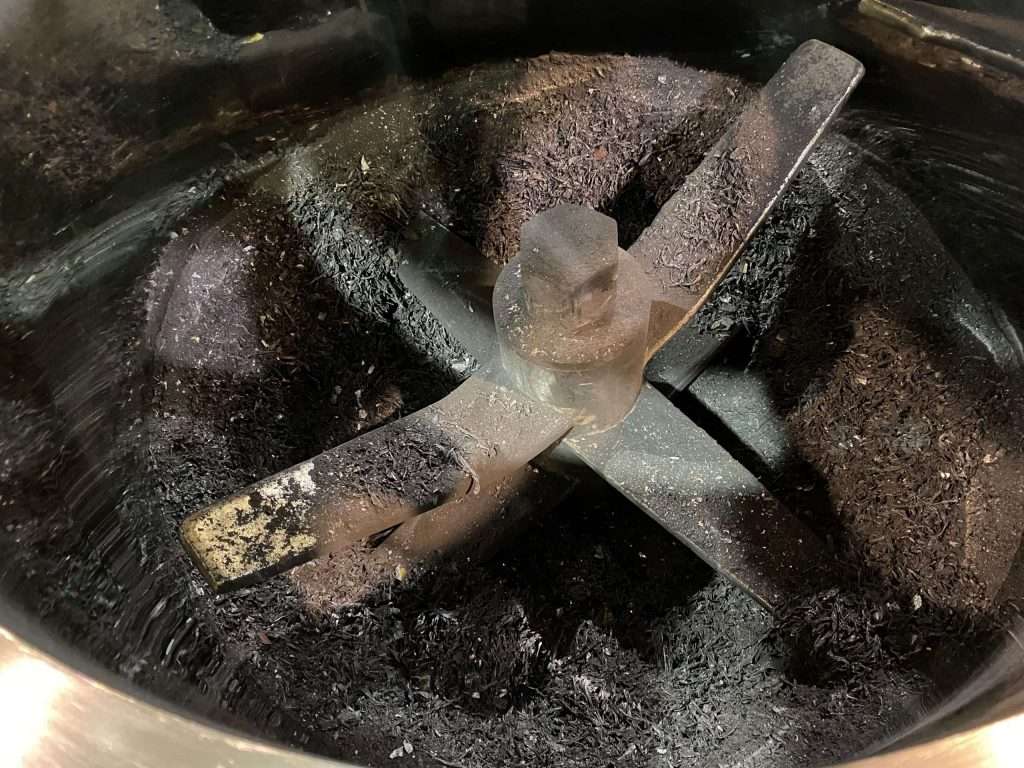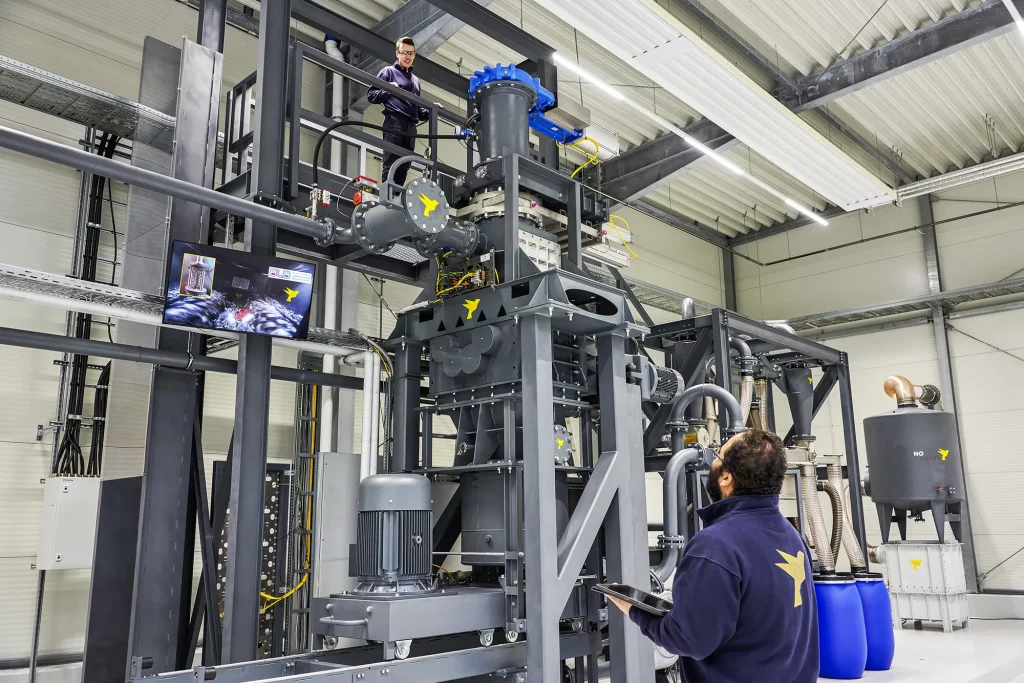Intensive drying with VOC recovery
No Canary defines intensive drying with VOC recovery as an innovative process step that ensures that the shredded battery materials are dry and separated and that liquid residues are collected cleanly. We have developed a process to efficiently remove the moist, chemically reactive components from the battery slurry, and in doing so, we do not simply blow the escaping gases (known as VOCs – volatile organic compounds, i.e., electrolyte solvents) into the air, but condense and recover them. Our plant evaporates and recycles the hazardous liquids from batteries. This makes the process more environmentally friendly and safer. In short, we offer a highly effective drying technology within the recycling process that surpasses competing processes in terms of efficiency and sustainability.

Our intensive drying solution for battery material
For operators of recycling plants, we supply an intensive drying unit as an integral part of the pre-module. Specifically, this is a vacuum-tight mixing dryer that is directly connected to the vacuum shredder. This system further agitates and heats (moderate temperatures) the shredded battery material under vacuum so that even the last traces of moisture – especially the electrolyte solvents (e.g., EC, DMC) – evaporate. We equip this unit with a heat transfer system ( ) to accelerate the drying process. At the same time, the resulting vapor is extracted via vacuum and liquefied again in a condenser. We collect the condensed VOC mixture (volatile organic hydrocarbons and, if applicable, water) in tanks – the customer can either dispose of it or potentially return it to the material cycle. We also offer filter systems (activated carbon, chemical adsorption) to remove residual trace substances such as hydrogen fluoride from the gas stream before the purified air is returned to the process cycle. In summary: We supply a closed drying system that thoroughly dries the battery material in a vacuum and safely separates the escaping VOCs. For recyclers/OEMs, this means that they receive dry, non-reactive solids (black mass, metal, plastic) for further processing and generate as few emissions as possible, as we recover almost all of the VOCs. This intensive drying system is precisely tailored to lithium-ion batteries, including control technology that regulates the optimum degree of drying.
Professionals are particularly interested in how our intensive drying process works: Essentially, it is a vacuum-based contact drying process with an impact or grinding component. After coarse grinding, the particles fall into a heatable intensive mixer, which rotates slowly or uses an agitator to keep the particle layer in motion. This mechanical movement constantly renews the moisture films that are still adhering (electrolyte on foils and particles) and exposes the surface of the particles, which facilitates evaporation. Under the prevailing vacuum (typically 5–20 mbar in this phase), the low-boiling components of the electrolyte (mainly organic carbonates) boil at temperatures < 80 °C. This process is “intensive” because an autogenous milling effect can also be activated: if necessary, the speed of the mixing tool can be increased to peripheral speeds of >10 m/s, which stirs up the material bed. This knocks any remaining coating residues off the films, deagglomerates coating particles, and accelerates drying through fragmentation (larger surface area, thinner particles). The resulting vapors are continuously extracted – our system uses a condensation section with a heat exchanger (cooler) that liquefies most of the solvent vapors. The recovery rate for organic solvents is very high (typically > 90% is captured). We offer professionals a highly optimized, multi-modal drying system that is specifically tailored to the degassing and delamination of battery components – including the recovery of the extracted volatile substances.

Our intensive drying unit is matched to the throughput capacity of the vacuum comminution. Important performance data are:
40 – 120 °C
Temperature range
5 mbar
Operating pressure
~ 15 – 30 min.
Drying time (including vacuum grinding time)
< 0.5 %
Residual moisture in the product
> 90 %
VOC recovery rate (organic solvents )
* Referenzmessung mit Panasonic NCA 21700 (TESLA Model 3) nach Trocknung bei 40°C für 30 Minuten mit der No Canary-Technologie. Gerne können Sie Ihre eigenen Batterien an unserem Standort testen!
50 – 4000 kg/h
Capacity